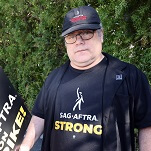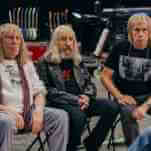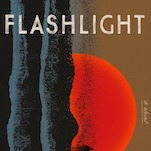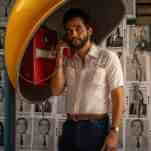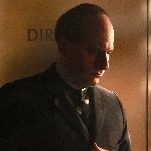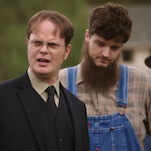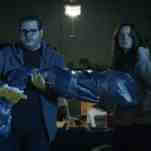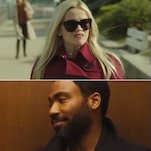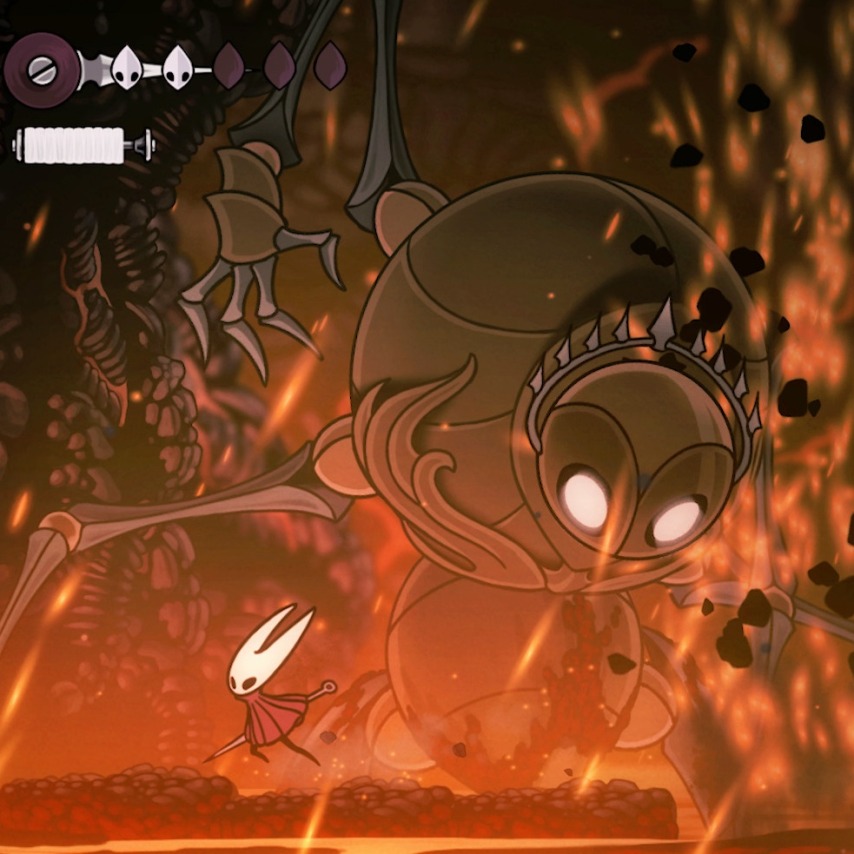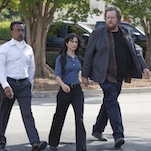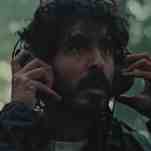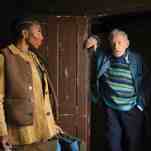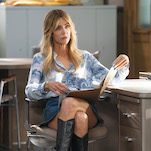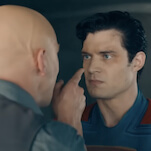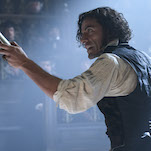Marty Hart has committed the most egregious sin in the Book of Male Antihero: He’s gone ordinary. In the parlance of St. Martin of Scorsese, patron saint of lovable assholes, captivating monsters, and psychos worth rooting for, he’s a schnook. With a private investigation firm on the wane, a dance card full of mundane Match.com profiles, and a frozen dinner waiting for him at home, he may as well put on a bathrobe and go pick up Henry Hill’s morning paper. It’s commendable that True Detective has allowed Marty to fall this far—but I’m worried that former state police detective Hart is angling for a redemption story.
Even the most consistent of the show’s many praise-worthy elements—the towering performances of its two leads—is blunted in “After You’ve Gone.” In separate moments that should pack potent emotional punches, Woody Harrelson gives takes to the camera that serve as unintentional reminders of the actor’s superb comedic chops. It’s too bad, too, because his reaction to the Marie Fontenot snuff film and the flashback nightmare from the tweaker’s microwave should be humanizing moments for erstwhile He-Man Cop Martin Hart. Both Marty and Rust approach the end of this story with a renewed commitment to honesty, but there’s a quibbling degree of insincerity to what should be Marty’s big moments in “After You’ve Gone.” (Or then again maybe it’s all an act and he’s unconvincing in his response because, as part of the state-police coverup of the Tuttles’ backwoods dressup games, he was one of the guys in the masks and he’s been found NO, STILL NOT YET.)
In terms of surprises, “After You’ve Gone” does juke the expectations we’ve come to hold for HBO dramas, which traditionally light the bigger fireworks in the season’s penultimate episode, then spend the finale sweeping up the ashes. However, in telling a story that won’t continue past the next episode, True Detective doesn’t have that luxury, so it’s saving all that flashy stuff for last. (Speaking of flashy, the visuals may be a little flat this week, but the episode does open with a neat zoom on a jukebox as it cues up Juice Newton’s “Angel Of The Morning.”) There is excitement this week: When Cohle presents a former Tuttle employee with sketches of the stick sculptures, she spews forth Carcosa babble; in the final scene, Papania and Gilbough ask for directions from a man with a suspicious skin condition. But like that man’s equally suspicious landscaping methods, the episode involves a lot of circling, revisiting of events that the viewer previously heard about in interview sequences.
The good news there: While Nic Pizzolatto starts filling in the cracks in his narrative, he’s not repeating what we know word for word. Part of that is a continuation of the unreliable narration of “The Secret Fate Of All Life,” while another part illuminates the depths of Rust’s Yellow King mania. Did we need to see the storage shed Rust previously refused to show the cops? No, but getting a glimpse of its layout offers an unprecedented look inside the deteriorating mind of Rustin Cohle, the diagrams from his apartment blown up to a massive scale. Marty’s been able to let go of the deplorable characteristics of his old self, while Rust poured a big can of crazy over his own. “After You’ve Gone” isn’t the most quotable episode of True Detective to date, but it does turn up a gem of noir-indebted phrasing when Rust is adapting his “sprawl” to its largest venue yet: “Life’s barely long enough to get good at one thing. Be careful what you get good at.” The silver lining tangled up in the circular nature of “After You’ve Gone” involves the multiple reminders of what Rust and Marty are good at. The sparks fly between Harrelson and Matthew McConaughey every time Marty demonstrates the bloodhound instincts that weren’t left behind with his badge and gun, and McConaughey is great fun as someone remembering that his asshole partner is natural police.
I get worried that, after seven episodes of difficult answers and muddled morality, True Detective is headed toward a tidy conclusion in which Marty and Rust get the heroic moment they invented after killing Ledoux. (But given the fatalistic way that Rust is talking near the end of “After You’ve Gone,” maybe it’ll be a little messier than all that.) Meanwhile, the falls he and his once-and-current partner have taken keep me anticipating that finale, and they make tonight’s talky, exposition-heavy speed bumps easier to ride out. It goes back to the “other bad men” philosophy Rust expressed all that time ago: There was only so much change Hart and Cohle could effect in their official capacity as police officers. They’re no longer accountable to a department or to a family, only accountable to each other and the debt they owe the women and children who’ve disappeared because the wrong bad man died in 1995. (Speaking of which: In all the digital ink that’s been spilled about True Detective, has anyone written about how the actual love story buried in all of this grime and gunk is between Rust and Marty?) They’ve been narrowed down to a two-man crew, just trying to make one last wrong right. In order for that to happen, they had to become schnooks. It’s just a bummer that the episode in which that happens is a bit of a schnook as well.
Stray observations:
- A name to keep in mind for the finale: Childress.
- In the original cut of “After You’ve Gone” that I watched, the images on the Fontenot tape were much less distinct, to the point where it looked like Marty was screaming at indistinguishable black-and-white blobs. So Woody Harrelson probably deserves a little more credit for stirring up the emotions necessary for that scene.
- Improbable True Detective theory corner: Maggie wears yellow when she visits Rust at the bar (and keeps a strategically placed sunflower on her mantle) because she’s been the Yellow King the whole time, and you never paused to think about that possibility, you sexist jerk.


